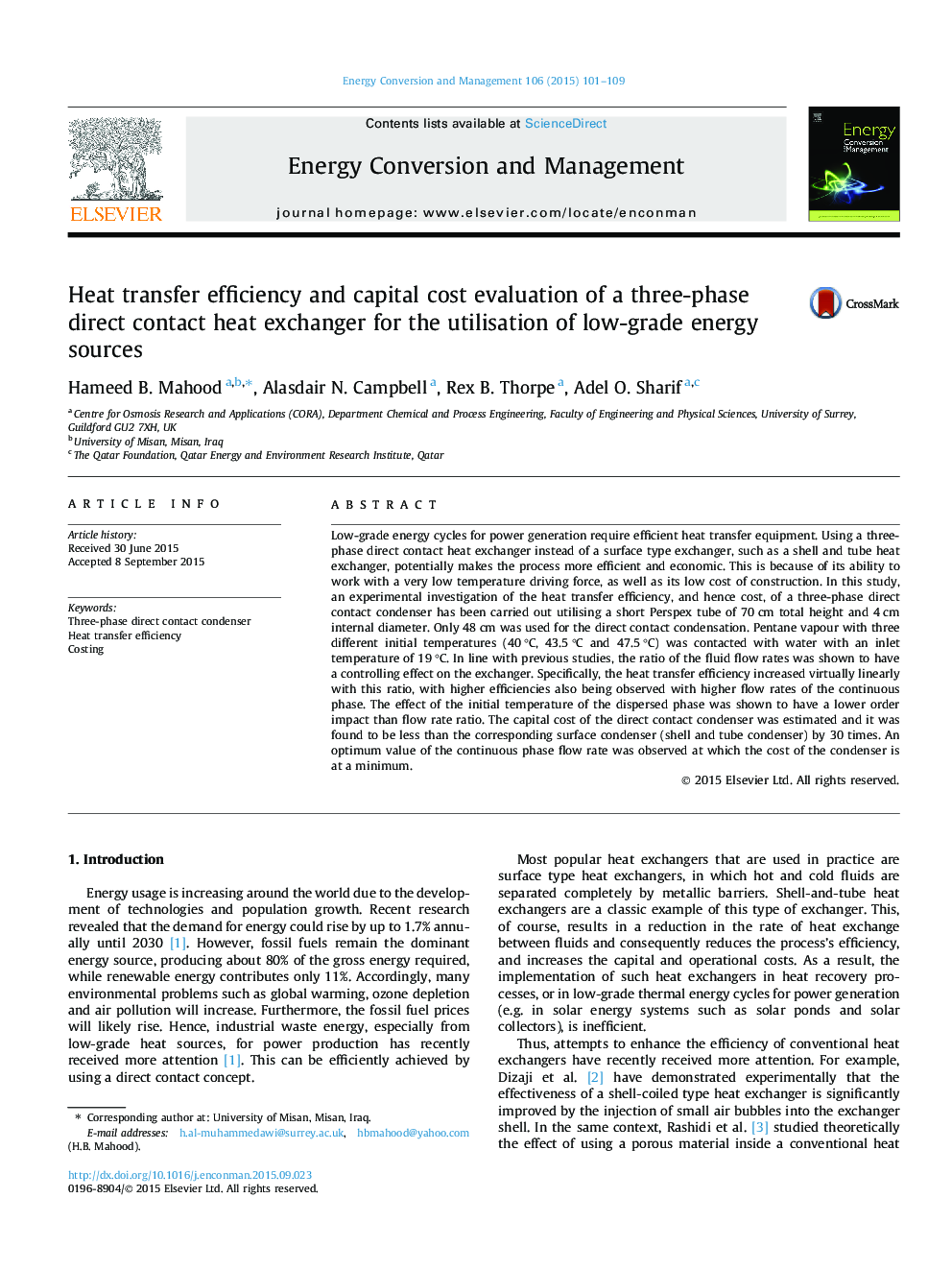| Article ID | Journal | Published Year | Pages | File Type |
|---|---|---|---|---|
| 7161972 | Energy Conversion and Management | 2015 | 9 Pages |
Abstract
Low-grade energy cycles for power generation require efficient heat transfer equipment. Using a three-phase direct contact heat exchanger instead of a surface type exchanger, such as a shell and tube heat exchanger, potentially makes the process more efficient and economic. This is because of its ability to work with a very low temperature driving force, as well as its low cost of construction. In this study, an experimental investigation of the heat transfer efficiency, and hence cost, of a three-phase direct contact condenser has been carried out utilising a short Perspex tube of 70 cm total height and 4 cm internal diameter. Only 48 cm was used for the direct contact condensation. Pentane vapour with three different initial temperatures (40 °C, 43.5 °C and 47.5 °C) was contacted with water with an inlet temperature of 19 °C. In line with previous studies, the ratio of the fluid flow rates was shown to have a controlling effect on the exchanger. Specifically, the heat transfer efficiency increased virtually linearly with this ratio, with higher efficiencies also being observed with higher flow rates of the continuous phase. The effect of the initial temperature of the dispersed phase was shown to have a lower order impact than flow rate ratio. The capital cost of the direct contact condenser was estimated and it was found to be less than the corresponding surface condenser (shell and tube condenser) by 30 times. An optimum value of the continuous phase flow rate was observed at which the cost of the condenser is at a minimum.
Keywords
Related Topics
Physical Sciences and Engineering
Energy
Energy (General)
Authors
Hameed B. Mahood, Alasdair N. Campbell, Rex B. Thorpe, Adel O. Sharif,
